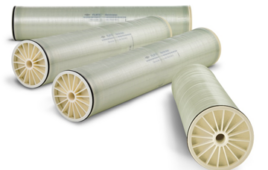Kevin Keener’s research has shown that cooling eggs after they are laid may increase the natural defenses those eggs have against bacteria such as Salmonella. Photo: Purdue Agricultural Communication file photo/Keith Robinson |
Once eggs are laid, their natural resistance to pathogens
begins to wear down, but a Purdue
Univ. scientist believes
he knows how to rearm those defenses.
Kevin Keener, an associate professor of food science,
created a process for rapidly cooling eggs that is designed to inhibit the
growth of bacteria such as salmonella. The same cooling process would saturate
the inside of an egg with carbon dioxide and alter pH levels, which he has
found are connected to the activity of an enzyme called lysozyme, which defends
egg whites from bacteria.
“This enzyme activity is directly related to the
carbon dioxide and pH levels,” said Keener, whose results were published
in Poultry Science. “An increase
in lysozyme would lead to increased safety in eggs.”
Freshly laid eggs are saturated with carbon dioxide and
have pH levels of about seven. Over time, the pH level rises to nine and carbon
dioxide escapes, Keener said. As that happens, lysozyme becomes less active.
Keener saturated purified egg white lysozymes with carbon
dioxide and tested different pH levels. He found that at both high and low pH
levels, the addition of carbon dioxide would increase lysozyme activity by as
much as 50%.
The cooling process Keener developed would create the same
conditions, he said.
“When we cool the eggs, carbon dioxide is sucked
inside the shell,” Keener said. “We’re able to resaturate the white
of the egg with carbon dioxide, returning it to that original condition when
the chicken laid it.”
The additional lysozyme activity would give eggs more time
to self-eliminate harmful bacteria.
Keener’s cooling technology uses carbon dioxide
“snow” to rapidly lower the eggs’ temperature. Eggs are placed in a
cooling chamber and carbon dioxide gas at about minus 110 degrees Fahrenheit is
generated. The cold gas is circulated around the eggs and forms a thin layer of
ice inside the eggshell. After treatment, the ice layer melts and quickly
lowers an egg’s internal temperature to below 45 degrees Fahrenheit. The
eggshell does not crack during this process because it can resist expansion
from a thin ice layer.
Keener said Food and Drug Administration studies show that
if eggs were cooled and stored at 45 degrees or less within 12 hours of laying,
there would be an estimated 100,000 fewer salmonella illnesses from eggs in the
United States
each year.
Keener will continue to study the molecular changes that
occur with egg cooling.





